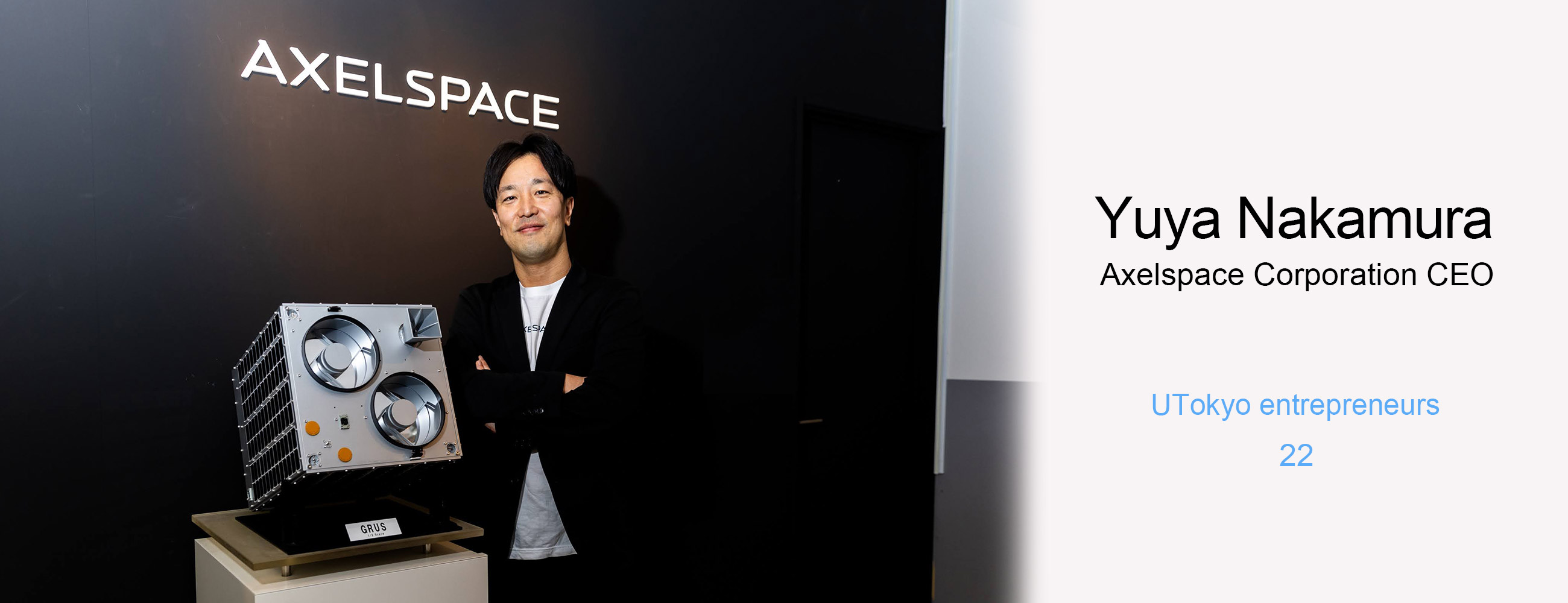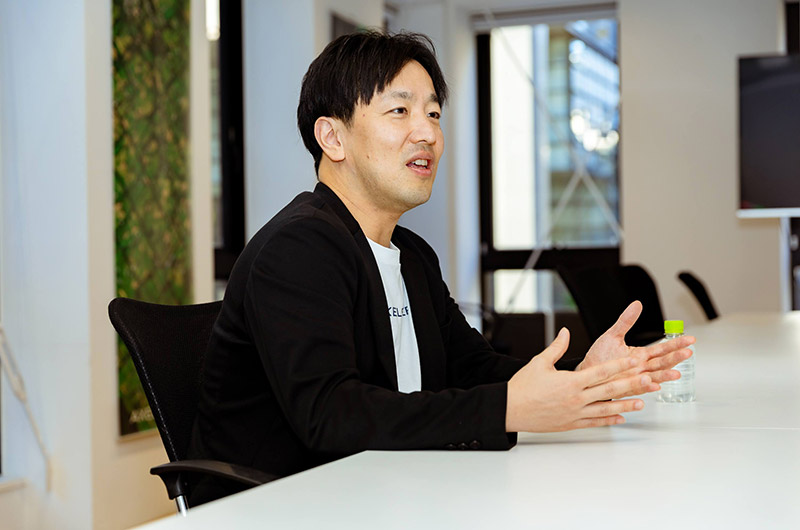Indomitable pioneer sends microsatellite business into orbit Entrepreneurs 22

This series introduces entrepreneurs who have received startup support from UTokyo programs or who have utilized university research. UTokyo’s support aims to expand Japan’s innovation ecosystem.

More than two decades ago, in 2003, Yuya Nakamura, then a second-year master's student at the University of Tokyo’s Graduate School of Engineering, witnessed the launch of the world’s first CubeSat microsatellite from the Plesetsk Cosmodrome spaceport in Russia. The ultrasmall, handmade satellite, measuring merely 10 centimeters on a side and weighing 1 kilogram, had been built by a team of students, including Nakamura, in their lab at UTokyo.
“It was an unprecedented project,” Nakamura recalled. “There was no textbook for creating such a microsatellite, but we succeeded through trial and error. Witnessing its launch into space was overwhelming.”
Nakamura’s involvement with this project eventually led him to become one of the pioneers in establishing a space startup in Japan. Axelspace Corp., which he founded in 2008 as president and CEO, has since become a leading company in the nascent space business. Drawing on its expertise in designing, developing and operating satellites, it offers one-stop services to governments and companies. It also provides images captured by satellites and solutions through data analysis for various sectors, including agriculture, disaster mitigation and environmental protection.
Nakamura noted that Axelspace is at the forefront of this business sector despite the many obstacles he faced as a pioneer, thanks to the “many strokes of luck” he encountered along his journey. Axelspace now aims to more than double the number of the company’s own microsatellites in orbit, from the current five, to build a satellite constellation (a network of satellites working as a system to provide global coverage) with its partners. The company is also trying to realize the mass production of satellites. As Nakamura explained, "By addressing various satellite-related needs, Axelspace aspires to create a ‘world in which space utilization is nothing special.’”
Fateful encounter

Nakamura entered UTokyo in 1998, at first contemplating becoming an organic chemistry researcher. That changed, however, when he met Professor Shinichi Nakasuka, who specialized in aerospace engineering, during an orientation held for students ahead of choosing a major starting in their third year.
“Join my lab where students are building satellites with their own hands,” Nakasuka said, calling out to prospective recruits. The pitch left a strong impression on Nakamura, who had never imagined that making satellites in a university laboratory was possible. He subsequently visited Nakasuka’s laboratory and saw students soldering and performing other tasks with genuine enthusiasm. “I found myself wanting to join this team where students were pursuing what they truly like,” Nakamura said.
Nakamura then advanced to UTokyo’s Department of Aeronautics and Astronautics, where he became involved in the student-led project to make satellites at Nakasuka’s laboratory starting from his fourth year.
CubeSat was completed solely by students using commercially available parts and products, enabling the satellite to be made at relatively low cost. This approach defied the conventional wisdom at the time that satellite parts should be tailor-made, regardless of the cost.
After the satellite was launched, Nakamura advanced to the department’s doctoral program to continue pursuing his work in developing satellites. However, as he neared the end of his program, he was appalled to find out there wasn’t any company in Japan where one could work on developing microsatellites as a business.
“Scales fell from my eyes”
After much contemplation, Nakamura sought Nakasuka’s advice about finding employment. The professor surprised Nakamura with the proposal for his student to join a project for which Nakasuka was trying to obtain a subsidy from the Japan Science and Technology Agency. The subsidy was designed to incubate startups that harness technologies developed by universities.
“I never imagined that such an option existed,” Nakamura recalled, explaining that this revelation — “like scales falling from my eyes” — led to his decision to become an entrepreneur. Nakamura then pushed ahead with his plan to launch a startup, although he had no business experience, driven by his aspiration to develop microsatellites that are beneficial to society.Nakamura arrived at a major turning point in 2007 when he crossed paths with Weathernews Inc., a major Japanese provider of weather information. At that time, Weathernews was considering launching a microsatellite for sea ice observation to help ships navigate the Arctic Ocean. Nakamura participated in a joint study on the project, after which Weathernews gave the green light to the launch. Nakamura soon inaugurated Axelspace, headquartered in Tokyo.
Shifting business model
Nakamura initially intended to build up and expand the satellite manufacturing business, but soon hit a wall. Since companies have to bear the risk of owning and operating satellites, new clients did not come forward, prompting Nakamura to reconsider his business plan.
Around 2015, however, notable developments in the space business, as demonstrated by U.S. startups that succeeded in procuring large amounts of funding, raised the prospects of companies in the private sector by making them more viable. Given this climate, Axelspace decided to change its business strategy and launch its own satellites. It procured a total of 1.9 billion yen from outside investors, including venture capital firms, in the Series A funding round in 2015, and announced a new web platform service called AxelGlobe, which provides Earth observation data collected by a group of microsatellites. During that period, Nakamura decided to entrust the development of satellites to others while he focused on managing his company.
At present, AxelGlobe is being applied to agriculture, disaster mitigation, environmental protection and various other purposes. Working with local partners, AxelGlobe offers solutions based on the analysis of Earth observation data to governments and companies globally. For example, the service suggests which crops are suitable for cultivation in specific soil and provides guidance on crop management.
AxelGlobe also offers invaluable information for resource surveys and monitoring and managing forests to support corporations that are taking into account environmental, social and governance (ESG) factors to improve their management. Furthermore, in 2022, Axelspace announced the launch of the AxelLiner project, a new business initiative for the mass production of satellites, overturning the conventional way in which satellites are produced as one-off.
Axelspace plans to increase the number of satellites in orbit for AxelGlobe, from five to more than 10, to enable the daily observation of every corner of the Earth.
Nakamura is now setting his sights on establishing space as social infrastructure. “If we consider space as something special, business is bound to be limited in its scope,” he said. “Making space a familiar option for business and life on Earth can generate new value, and it is crucial to deliver such value in a timely manner.”

Axelspace Corp.
Established in August 2008, Axelspace Corp. has successfully launched nine satellites as of March 2021, including WNISAT-1 for Weathernews Inc. in 2013 and RAPIS-1 for Japan Aerospace Exploration Agency (JAXA) in 2019. The company secured a total of 30 million yen in the seed funding round (2014); 1.9 billion yen in the Series A round (2015); 2.58 billion yen in the Series B round (2018); 2.58 billion yen in the Series C round (2021); and another 6.24 billion yen in the Series D round (2023). Axelspace has strong ties with the University of Tokyo, participating together in a joint project with other parties to launch the Hodoyoshi-1 microsatellite in 2014 and receiving funding from UTokyo Innovation Platform Co., Ltd. in the Series B round. With an international team of 154 members (as of January 2024), and more than 30% of them hailing from overseas, the company aims to realize its vision of “Space Within Your Reach.”
Date of interview: Oct. 23, 2023
Interview/Text: Yumiko Mori
Top and bottom photos: Public Relations Group






